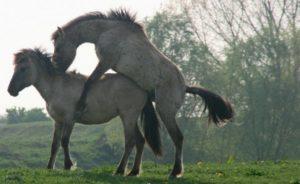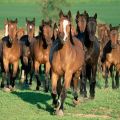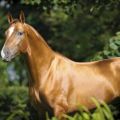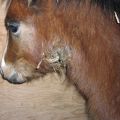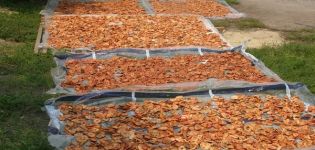What diseases do horses have, methods of their treatment and prevention
Horse breeders know that proper care and a nutritious diet are key to the health of horses. But in most cases, it is not possible to completely avoid injuries and illnesses. Joint maintenance, infections, inaccuracies in nutrition, and the characteristics of the body lead to the fact that horses sometimes get sick. Consider what diseases horses suffer from, what treatment is required.
Common signs of ailment in horses
A healthy horse is distinguished by excellent appetite, liveliness, good mood, joy from communication with a person. Diseases have different symptoms; only an experienced veterinarian can detect pathology. There are a number of signs by which one can suspect that not everything is in order with the animal:
- behavior change - the appearance of anxiety or indifference and lethargy;
- dullness of hair, manes, profuse hair loss;
- temperature rise;
- discoloration of mucous membranes, dull eyes;
- loss of appetite, rejection of your favorite food.
You can guess about problems with legs and hooves by lameness, unwillingness to run. With pathologies of the digestive tract, diarrhea may begin. A number of diseases are accompanied by breathing disorders, shortness of breath, and palpitations. Grooms who constantly interact with animals usually quickly notice that the pet is having problems.
Classification of diseases
All equine diseases are divided into several groups according to the ways of development and damage:
- infectious - caused by bacteria, viruses;
- invasive - parasite infestation;
- non-infectious - gastrointestinal diseases, colds;
- cutaneous;
- diseases of the limbs - hooves, joints.
For horse breeders, an essential feature is infectiousness, that is, the infectious nature of the disease. In this case, the horse needs to be urgently isolated in order to prevent the spread of the disease throughout the population.
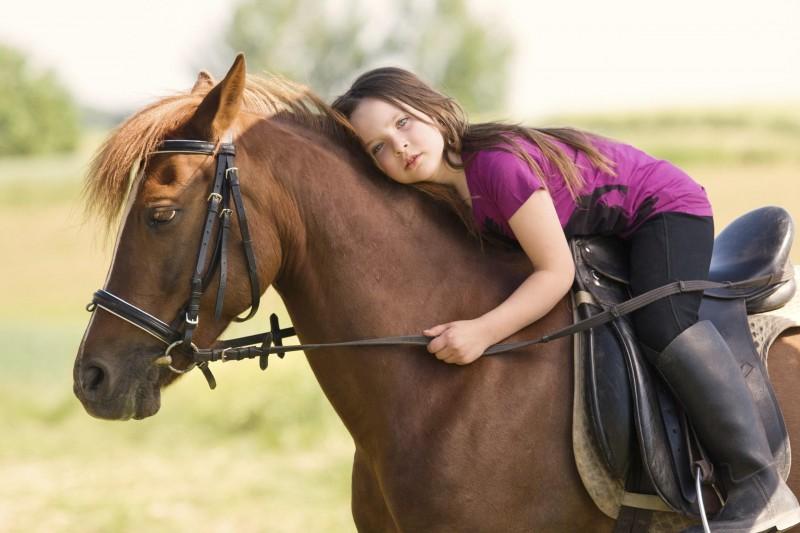
Equine infectious diseases
Contagious diseases must be identified quickly so that all horses on the farm are not affected. A number of diseases can be transmitted to humans.
Glanders
The causative agent is the bacterium Pseudomonas mallei. The bacterium multiplies in the lymph nodes, then spreads to the organs by blood, causing multiple glanders and ulcers. Lungs, skin, mucous membranes of the nose are affected.Symptoms are rapid breathing, muscle tremors, weight loss, and fever. There are no effective drugs, the horse dies.
Myt
The disease is caused by streptococcus (mytny). The characteristic signs of the disease are inflammation of the submandibular lymph nodes, nasal and oral mucous membranes with suppuration and abscesses. Most often, foals and young animals up to 5 years old suffer. The horse has difficulty swallowing due to inflammation of the pharynx, there is a cough, swelling of the submandibular region. Treatment - course of antibiotics, abscess opening.

Horse flu
Influenza is accompanied by catarrhal symptoms in horses - coughing, mucus, sneezing, and fever. In severe cases, pneumonia develops. The disease is widespread and affects horses of any age. Treatment is based on symptoms. Vaccination helps reduce risks.
Important: in case of infections, strict isolation of a sick horse is required, treatment of the stable with disinfectants, regular examination of the entire livestock.
Rhinopneumonia
The causative agent is equine herpesvirus. Young animals up to a year are often ill. Symptoms - conjunctivitis, respiratory catarrh, fever. The abortive form of rhinopneumonia leads to spontaneous abortions in mares or the death of foals on the first day. Treatment - according to symptoms, drugs to improve heart function. Vaccinations give short-term immunity.
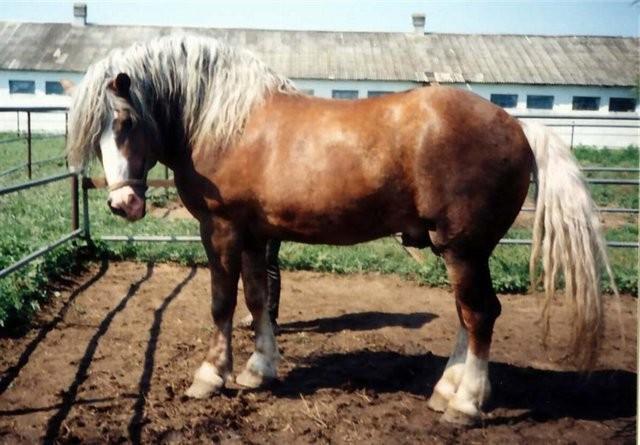
Infectious anemia
The viral disease affects the hematopoietic system, accompanied by fever, anemia, cardiac dysfunction and respiratory distress in horses. Hemorrhage develops on the internal and external organs.
Infectious encephalomyelitis
The causative agent is a virus leading to damage to the central nervous system, atonic disorders of the digestive tract, jaundice. Animals have paresis, paralysis, motor dysfunctions. The disease has a seasonal course, more often recorded in autumn and spring. There is no specific treatment.
anthrax
The most dangerous and fast-moving infectious disease of horses, affecting humans. It is characterized by a severe form of septicemia, the formation of tissue edema, carbuncles, damage to the lungs and gastrointestinal tract. The incubation period is 1-3 days. Horses often develop a lightning-fast form with death within a few hours.
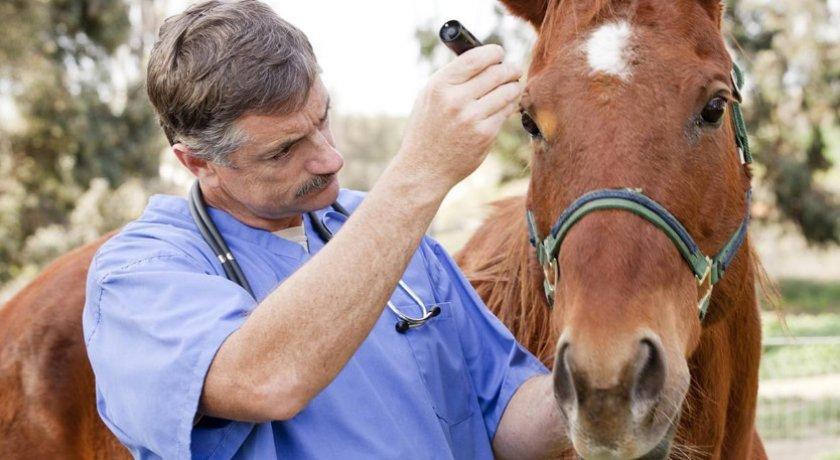
Rabies
The disease is caused by a special virus transmitted with saliva during the bite of a sick animal. Symptoms - the disease starts with an increase in temperature, continues with reflex excitability, reaction to light, noise. Rampage and aggression alternate with apathy.
Animals die in 100% of cases, from paralysis of the respiratory system (suffocation).
Tuberculosis
The disease is caused by mycobacterium. It is not common in horses, the course is latent, chronic. The animal loses weight, symptoms appear when a certain organ is damaged. The sick animal is slaughtered. For prevention, tests with tuberculin are regularly done.
Pasteurellosis
Symptoms - fever, inflammation of the skin and subcutaneous tissue, arthritis, osteomyelitis. Young horses are more likely to suffer from the disease. They are treated with polyvalent serum, antibiotics of a number of penicillins, sulfonamides.

Leptospirosis
In horses, the temperature rises sharply, signs of jaundice, conjunctivitis, swelling of the eyelids, iridocyclitis, colic, and swelling of the legs appear. For treatment, hyperimmune serum, Streptomycin is used.
Listeriosis
Bacterial infection is characterized by many forms with different symptoms - from photophobia and diarrhea to miscarriages in mares. The drugs are tetracycline antibiotics. Treatment is effective only in the early stages.
Smallpox
The reason is the smallpox virus. Symptoms include stomatitis, dermatitis with abscesses, lameness, if the blisters are localized on the legs. Smallpox is treated with antibiotics; gamma globulins are used to prevent inflammation.Treat abscesses with softening and cauterizing solutions. Immunity is lifelong.
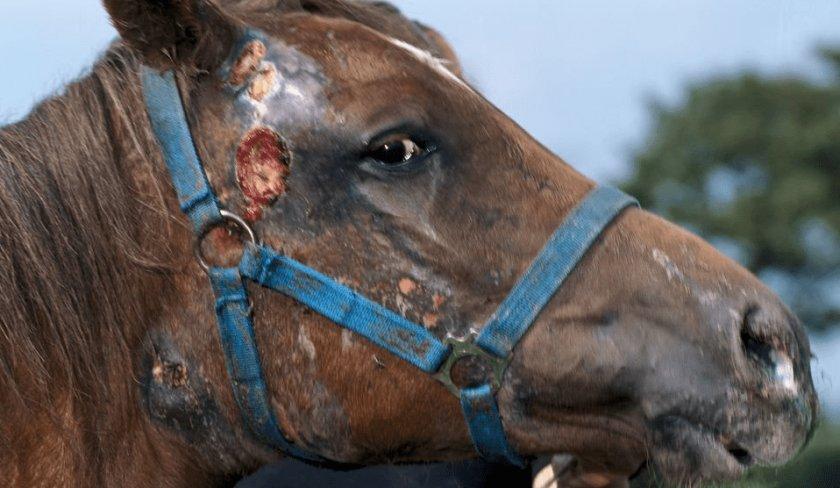
Salmonellosis
With salmonellosis, there are signs of diarrhea, in the feces - blotches of blood, fever, lethargy. In chronic course - cough, shortness of breath, joint swelling. Complex treatment - sulfonamides, nitrofurans, other antibiotics.
Non-communicable horse diseases
Non-infectious diseases include a large group of diseases in which quarantine measures and strict isolation of the horse are not required.
Respiratory diseases
Sneezing, coughing, nasal discharge are signs of respiratory illness. They can be of a cold or allergic nature. For treatment, herbal inhalations, expectorants, bronchodilators are used.

Digestive pathologies
Digestive pathologies are associated with the peculiarities of the structure of the gastrointestinal tract in horses and errors in feeding. These include - colic, damage and blockage of the esophagus, stool disorders and much more. Treatment is symptomatic.
Colic
Sharp pain in the gastrointestinal tract is caused by fermentation of food due to improper feeding, intense training, or due to certain diseases.
Horses knead their sides, do massage, enemas, gastric lavage. It is important to normalize nutrition.
Invasive diseases
Infection with parasites occurs through contact with a sick animal, through food and water, due to dirt in the stable and insect bites.
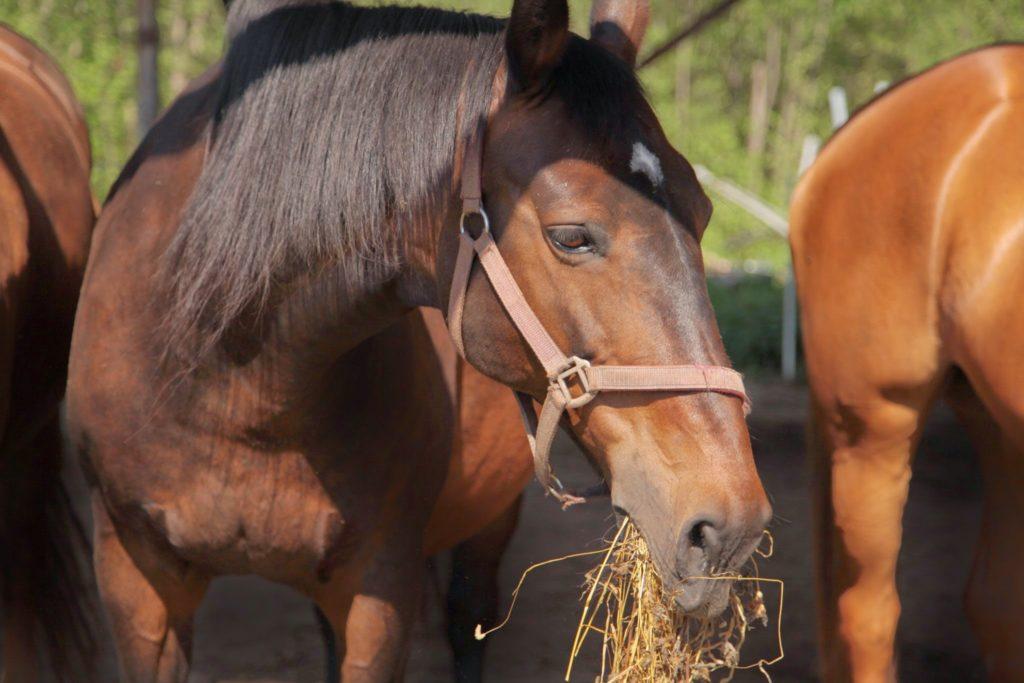
Accidental illness
The parasite (trypanosome) is transmitted by mating from a sick animal. Symptoms of infection are the formation of rounded formations, swelling of the genitals, changes in the shape of the croup, weight loss. In treatment, Naganin, Novarsenol, Azidin-vet are used.
Pyroplasmosis
The disease in horses is caused by the bites of ticks infected with piroplasmas. Symptoms are high fever, shortness of breath, yellowing of the mucous membranes, brown urine, painful urination. For treatment, Azidine, Hemosporidin are used.
Worms
Horse worms experience weight loss, mucus in the stool, diarrhea, and constipation. Deworming is carried out - Brovadazol, Brovalsen.
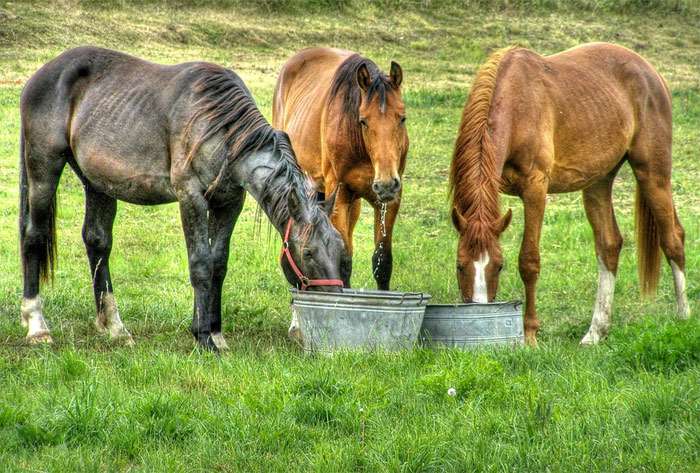
Scabies
When infected with an itch mite, the horse becomes restless, suffers from itching, scabs and scabs on the skin. Treat animals with Wagenfeld ointment, Diazinon solution.
Diseases of the joints and hooves
Diseases of the extremities often develop as a result of injuries, then bacterial and inflammatory processes join. Improper care and handling of horses can result in loss of movement.
Stretching the tendon
The tendon is damaged by careless jumping and movement of the horse. No special treatment is required - the horse is provided with rest, a cold compress on the limb, and motor activity is limited. Use tight leg bands when walking and working.
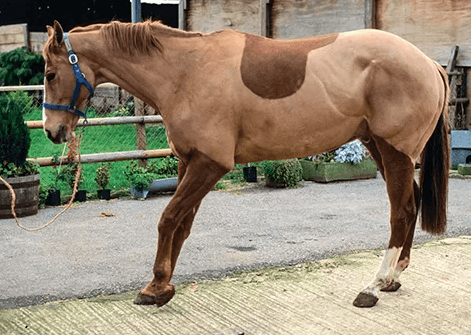
Corolla notch
The bruised wound is treated with antiseptic agents (iodine), the hair is preliminarily cut around, the horn of the hoof wall is cut off. With suppuration, an operation is performed, treated symptomatically.
Important: in case of hoof diseases, horses need to be given rest, relieved of stress for the entire duration of treatment, and provide a complete feed for recovery.
Capelet
Namina occurs due to improper shoeing and the size of the horseshoe, trauma to the hooves. It is important to immediately remove the horseshoe, treat it with an antiseptic, anti-inflammatory drugs, and ensure peace of the limb.
Zakovka
The problem arises from improper shoeing of the horse. Nails are removed from the hoof, the horseshoe is removed. For treatment, use antiseptic washing, a bandage.
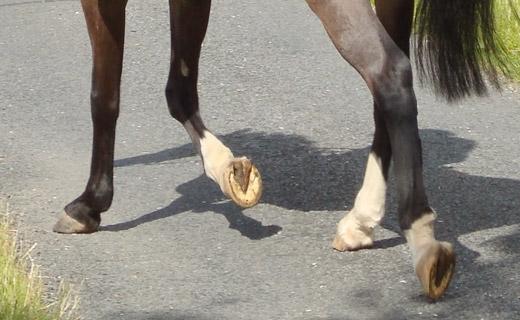
Cracked hoof
Hooves crack under heavy loads and injuries due to the wrong thickness of the forging nails. Blood is released from the hoof, the horse is limping. It is necessary to free the limb from the horseshoe, treat the wound with iodine, potassium permanganate in the presence of suppuration.
Laminitis
Inflammation of the lamina (lateral cartilage) of the hoof leads to edema of the limb, impaired blood supply. Bone rotation is enhanced with movement. For treatment, anti-inflammatory drugs (Ainil) are used, drugs to improve blood circulation in the limb. It is important to release the animal from stress.
A well thought out diet, cleanliness in the stable, and careful grooming reduce the risk of developing diseases in horses. It is important to vaccinate on time, monitor the condition of the horses. Newly arrived animals are quarantined. At the first signs of illness, the anxiety of the animal, a veterinarian is invited, treatment is started in order to maintain the health of the horses and prevent material damage to the farm.

